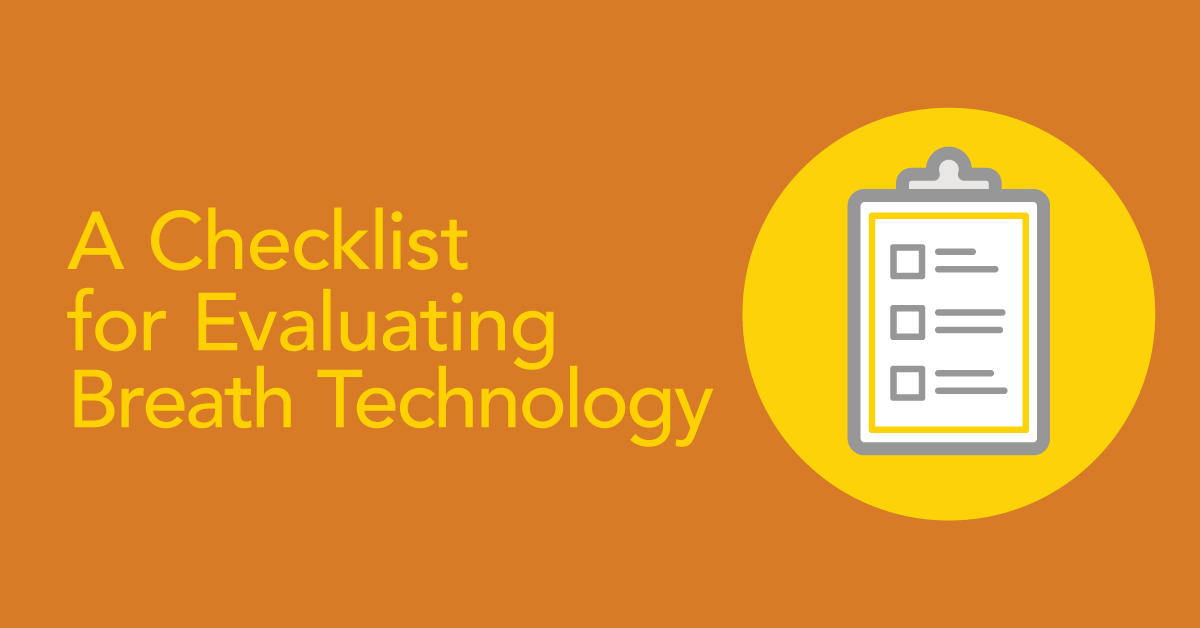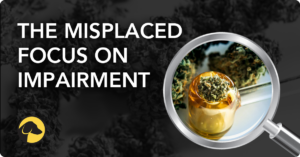
How to Evaluate a Cannabis Breathalyzer?
We have spent almost a decade developing a cannabis breathalyzer and have learned an incredible amount during that time. My background as an emergency room physician for 25 years lends additional understanding to the ins and outs of breath testing. This blog will summarize some of my insights to help you evaluate cannabis breathalyzers.
CANNABIS DETECTION THAT ALIGNS WITH THE IMPAIRMENT WINDOW
Why does this matter? The Hound Labs team frequently writes about the cannabis impairment window1 which is the period that cannabis smokers are likely impaired. The peak impairment window typically lasts a few hours as identified by several research groups2,3, which is why I talk about the need to understand recent cannabis use. The most effective cannabis breathalyzers will have a window of detection that aligns closely with the impairment window (about 3 hours). As a matter of fact, this guideline applies to all cannabis tests. Traditional cannabis tests of oral fluid, hair, and urine have very long detection windows, meaning that they will provide positive (non-negative) results far longer than a few hours – oral fluid (up to 48 hours), urine (up to 1 month), and hair (up to 3 months).
WHY ARE LONG CANNABIS DETECTION WINDOWS UNFAIR?
Why wouldn’t employers or law enforcement want to use cannabis tests with detection windows that extend beyond the impairment window? Well, when cannabis was universally considered an illicit drug, a long detection window was effective. However, now that most U.S. adults can choose to legally use cannabis, traditional cannabis tests are not only less relevant – they are unfair. A non-negative test from oral fluid, urine, or hair tests is likely to have no correlation with the impairment window because these tests have no way to discern recent use (within a few hours) from past use (beyond a few hours).
WHY DO SHORT CANNABIS DETECTION WINDOWS JEOPARDIZE SAFETY?
I was recently asked whether a test that measured cannabis in breath for only 5 minutes after smoking is useful. A cannabis detection window of 5 minutes won’t be useful because most cannabis users are impaired for much longer than 5 minutes. We’ve discussed the issues of tests that have windows of detection that lasts for many hours or days, but a detection window that is too short has safety consequences because the majority of cannabis users would test negative at, say, 15 minutes even though they are likely still impaired. The bottom line is that it is critical to have a breath test that is sensitive enough to detect THC4 for 2-3 hours after smoking.
ULTRA-SENSITIVITY TO MAINTAIN SAFETY
I described in my August blog, The Complexities of Researching THC in Breath, that THC measurement in breath is one of the most demanding scientific challenges because not only does the molecule degrade very quickly in breath – it remains detectable for only a few hours – but it also appears in very, very low concentrations – parts per trillion (1,000,000,000,000). Because I wrote in depth about the need for ultra-sensitive breath technology to effectively measure THC, I will not go into more detail here. What is important to remember is that a cannabis breathalyzer must be ultra-sensitive – measuring concentrations in breath less than 3 parts per trillion, or 3 picograms per liter (<3 pg/L) of breath.
SELF-CALIBRATION TO ENSURE ULTRA-SENSITIVITY
Scientific equipment requires regular calibration to ensure the predictability of the resulting measurements. Alcohol breathalyzers, for example, require regular calibration. A couple of years ago, the New York Times published a long investigative article about the problems with alcohol breathalyzers when the test administrators forgot or did not know how to calibrate them. These human errors invalidated thousands of results – even for those drivers who were clearly impaired and had been involved in crashes that injured or killed other drivers. The leading cannabis breathalyzers will self-calibrate, automatically making any adjustments before processing each breath sample. The frequent calibration happens automatically without the need for humans to learn complicated calibration steps or to remember to do it – eliminating the possibility of human errors related to calibration.
INSTRUMENT-READ RESULTS ON LOCATION
When a scientific instrument or test analyzes a sample, it provides data that leads to a test result. For example, an oral fluid test processes an oral fluid sample and the data gathered from the sample will indicate whether the donor used cannabis within the last 48 hours. The data can be interpreted by the test administrator – this is less ideal because of the potential for human error or the possibility of bias. OR, the test can be read by an instrument that eliminates the need for human interpretation. The HOUND® CANNABIS BREATHALYZER provides instrument-read results on location within minutes of processing the breath sample. This ensures objective results that can then be used to determine the course of action by employer or law enforcement protocols. Instrument-read results provides greater opportunities for fairness.
AUTOMATION OF KEY STEPS CAN INCREASE CONFIDENCE IN RESULTS
One of my favorite blogs was the one titled “Challenges of Building a Cannabis Breathalyzer (Part 2)” because in it, I discuss how we automated many steps in the process to test breath for cannabis. Automating a cannabis test – especially a cannabis breathalyzer – can serve many purposes, but for the purposes of this blog I am going to focus on ease of use and the reduction of human errors. One critical area to check for automation is the breath collection process. For example, the Hound® solution includes miniature pumps that help employees facilitate breath collection. Those pumps stop automatically once a sufficient sample has been collected, which helps standardize the sample and therefore the processing.
IN SUMMARY: A QUICK CHECKLIST TO HELP EVALUATE CANNABIS BREATHALYZERS
Here is the short list of key questions to ask about cannabis breathalyzers and the underlying technology:
1. How long does it detect cannabis? 2-4 hours aligns with the impairment window for most cannabis smokers.
2. What is the sensitivity of the breathalyzer? To achieve a 2-4-hour detection window, cannabis breathalyzers must be ultra-sensitive, with the capability to measure THC in breath in concentrations <3 picograms per liter (pg/L) of breath.
3. Does the cannabis breathalyzer self-calibrate? Scientists calibrate their equipment to maintain accuracy. The most advanced scientific equipment self-calibrates to eliminate human error and to maintain accuracy. Cannabis breathalyzers should self-calibrate – this will help to maintain their ultra-sensitivity.
4. Can the cannabis breathalyzer provide instrument-read results on location? Instrument-read results on location eliminate the biases that can be present when test administrators need to interpret results. If a human must decide whether a breath sample should be marked negative or non-negative based on their interpretation of the data, human error can occur. Instrument-read results analyze the data from the sample and provide objective results – eliminating the potential for human error linked to interpretation and removing the influence of bias.
5. Is the cannabis breathalyzer automated, facilitating ease of use? When correctly incorporated into scientific equipment, automation can facilitate ease of use and reduce human error. The most sophisticated cannabis breathalyzer automates key steps from breath collection to sample processing, reducing opportunities for human error and increasing confidence in the quality of the results.
A cannabis breathalyzer, like the HOUND® CANNABIS BREATHALYZER, represents almost a decade of research, innovation, and dozens of engineering and scientific breakthroughs to ensure confidence and objectivity while maintaining safety.
Footnotes
1 https://houndlabs.com/wp-content/uploads/2020/12/drugshumanperformfs.pdf
2 https://link.springer.com/article/10.1007/s00414-019-02006-3 (January 2019)
3 https://www.ncbi.nlm.nih.gov/pmc/articles/PMC4537523/ (September 2013)
4 Δ-9-tetrahydrocannabinol (Δ-9-THC) is the primary psychoactive ingredient in cannabis.

November 11, 2021
By MIKE LYNN, MD
CO-FOUNDER
Share












